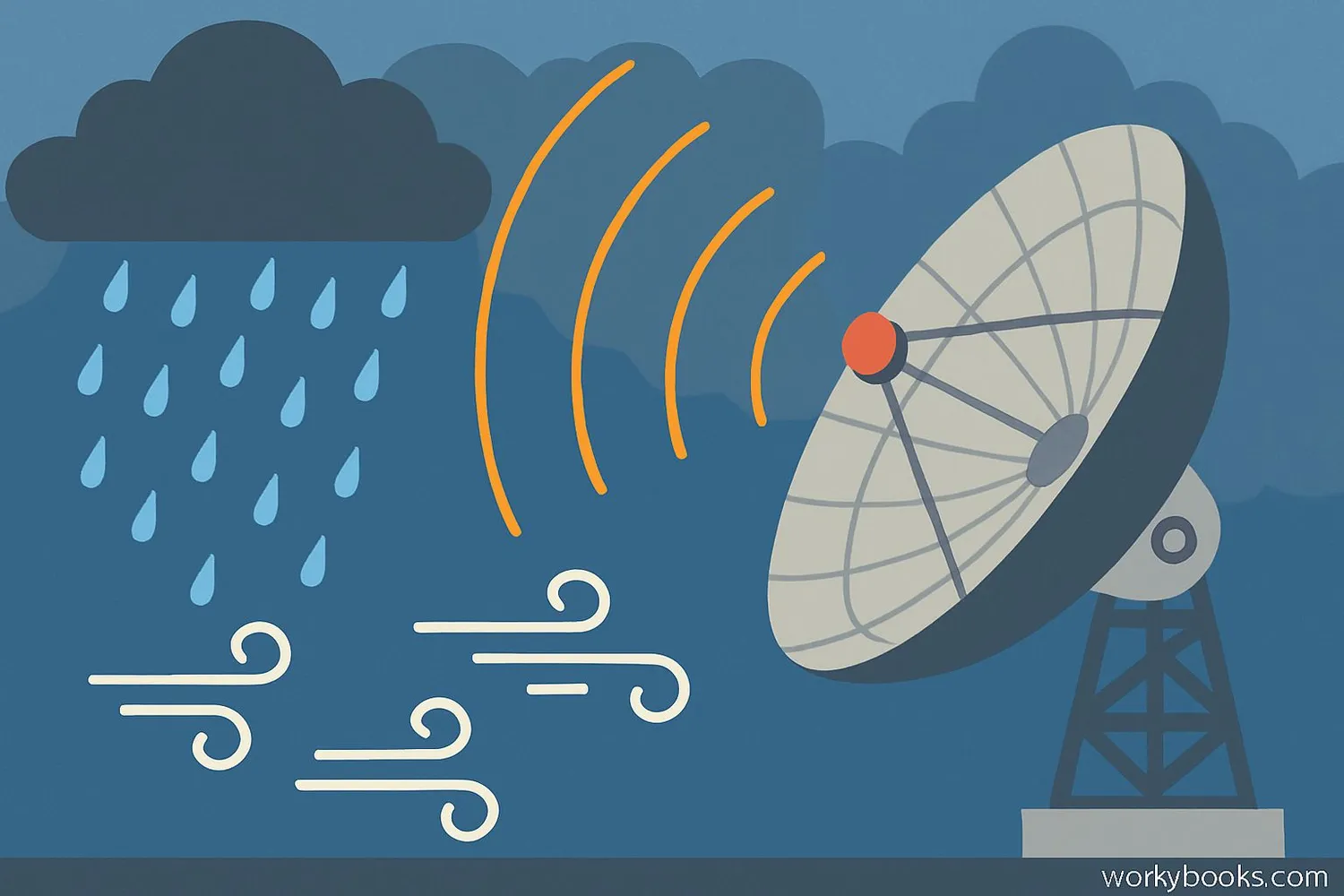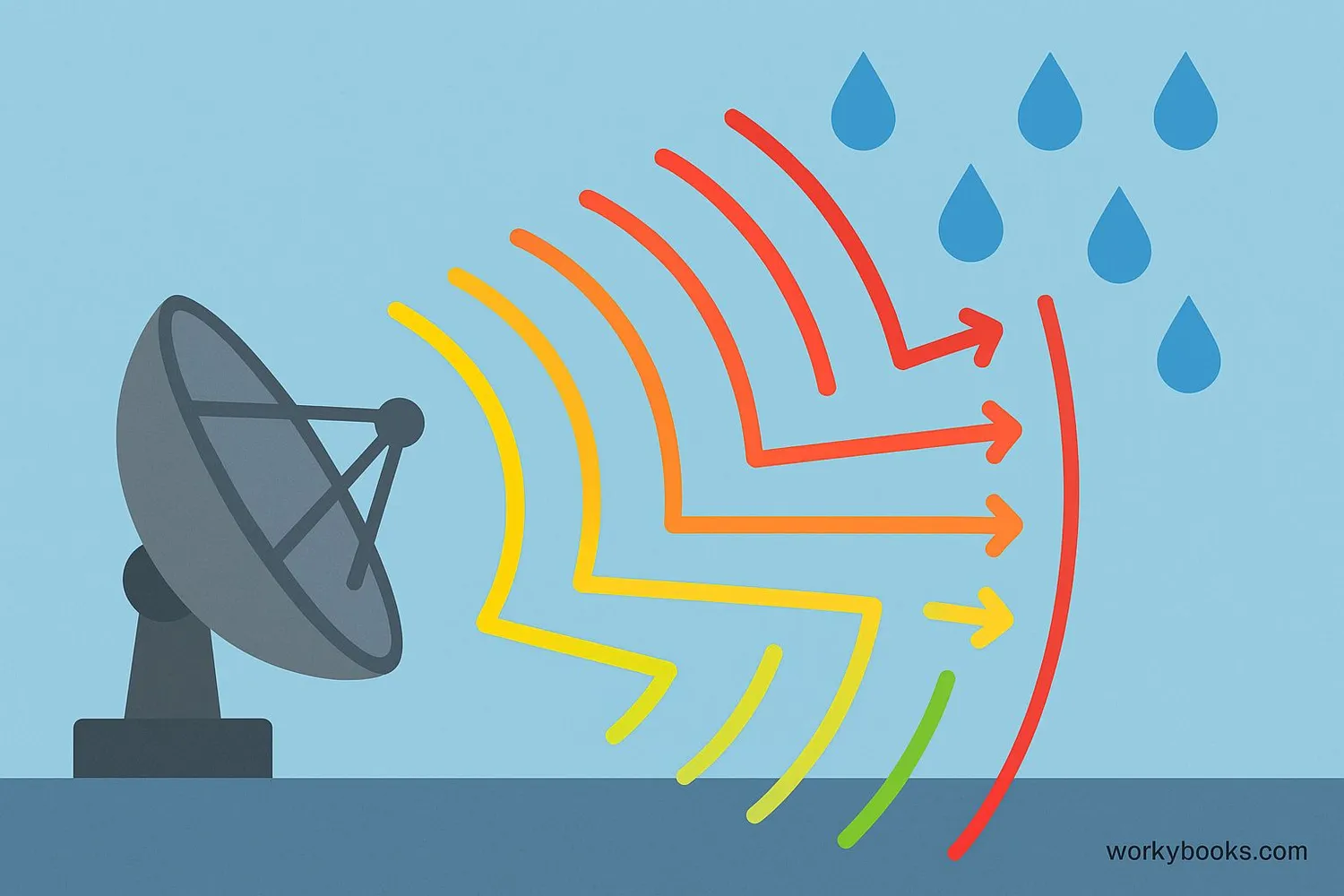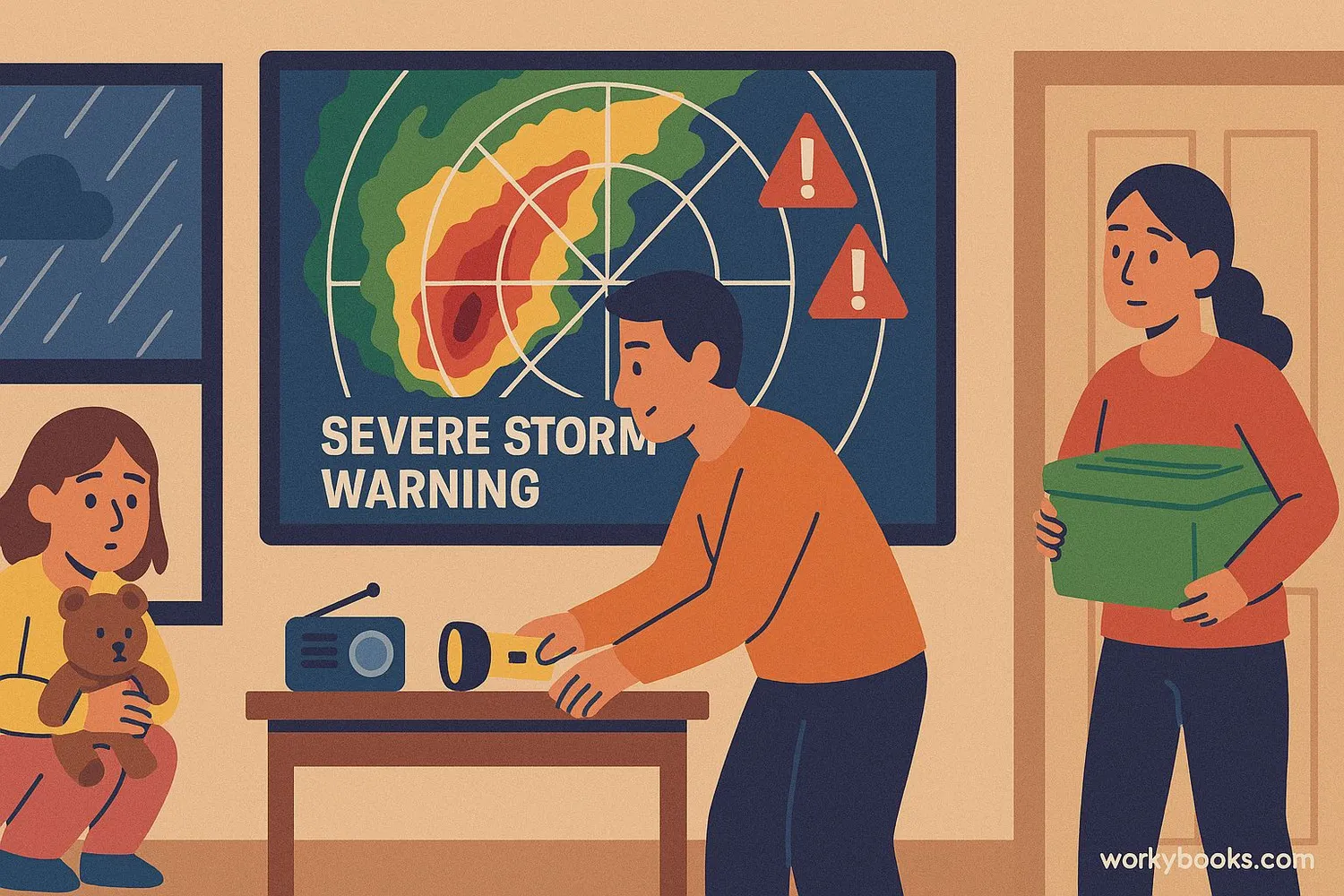Doppler Radar - Definition, Examples, Quiz, FAQ, Trivia
Discover how meteorologists track storms and predict weather using radar technology
What is Doppler Radar?

Doppler radar is a special type of weather radar that helps meteorologists track storms and predict weather. It's named after Christian Doppler, who discovered the Doppler effect - the way sound or waves change when something is moving toward or away from you.
Think of Doppler radar as a super-powered weather detective! It sends out radio waves that bounce off rain, snow, and even insects in the air. When these waves come back to the radar, scientists can see where precipitation is falling and how fast it's moving. This helps them predict when storms will arrive and how strong they might be.
Radar Fact!
The first weather radar was used in World War II to detect enemy aircraft, but meteorologists soon realized it could detect raindrops too!
How Doppler Radar Works

Doppler radar works by sending out pulses of radio waves and then "listening" for the waves that bounce back. Here's how this amazing technology detects weather:
Send Signal
The radar dish sends out a pulse of radio waves
Bounce Back
Waves hit precipitation like rain or snow and bounce back
Measure Time
Radar calculates distance by timing how long it takes waves to return
Detect Motion
The Doppler effect shows if precipitation is moving toward or away from radar
Create Image
Computers create colorful weather maps showing precipitation and wind
The Doppler effect works like this: When something is moving toward you, the sound waves (or radio waves) get squeezed together, making a higher pitch. When something moves away, the waves spread out, making a lower pitch. Doppler radar uses this principle to measure how fast raindrops or snowflakes are moving toward or away from the radar site.
Radar Power!
A typical weather radar can detect precipitation over 250 miles away! That's like seeing rain in a city four hours before it reaches you.
Why Doppler Radar is Important

Doppler radar is one of the most important tools for keeping people safe from severe weather. Here's why it matters so much:
Early Warnings
Detects dangerous weather like tornadoes and gives people time to find safety
Daily Forecasts
Helps predict rain, snow, and storms for everyday planning
Flight Safety
Guides airplanes around dangerous weather during flights
Without Doppler radar, we wouldn't know:
• When a tornado might form
• How much rain will fall during a storm
• Where a hurricane is heading
• When to expect snow or ice
Meteorologists use Doppler radar to create the weather forecasts you see on TV and your phone. Next time you check if you need an umbrella, thank Doppler radar!
Doppler Radar Quiz
Test your Doppler radar knowledge with this quiz! Answer all 5 questions to see how much you've learned.
Frequently Asked Questions
Here are answers to common questions about Doppler radar:
Doppler Radar Trivia
Discover some fascinating facts about Doppler radar:
Historical First
The first tornado detected by Doppler radar was on May 24, 1973, near Union City, Oklahoma. This detection gave people 25 minutes of warning before the tornado struck!
Speed Detection
Doppler radar can detect wind speeds as slow as 1 mph and as fast as 250 mph! This helps meteorologists identify both gentle breezes and violent tornado winds.
Radar Network
The United States has 159 Doppler radar stations called NEXRAD that cover the entire country. Each radar rotates every 4-6 minutes, scanning the atmosphere at different angles.
Dual-Polarization
Modern Doppler radar uses dual-polarization technology that sends both horizontal and vertical pulses. This helps it distinguish between rain, snow, hail, and even tornado debris!





